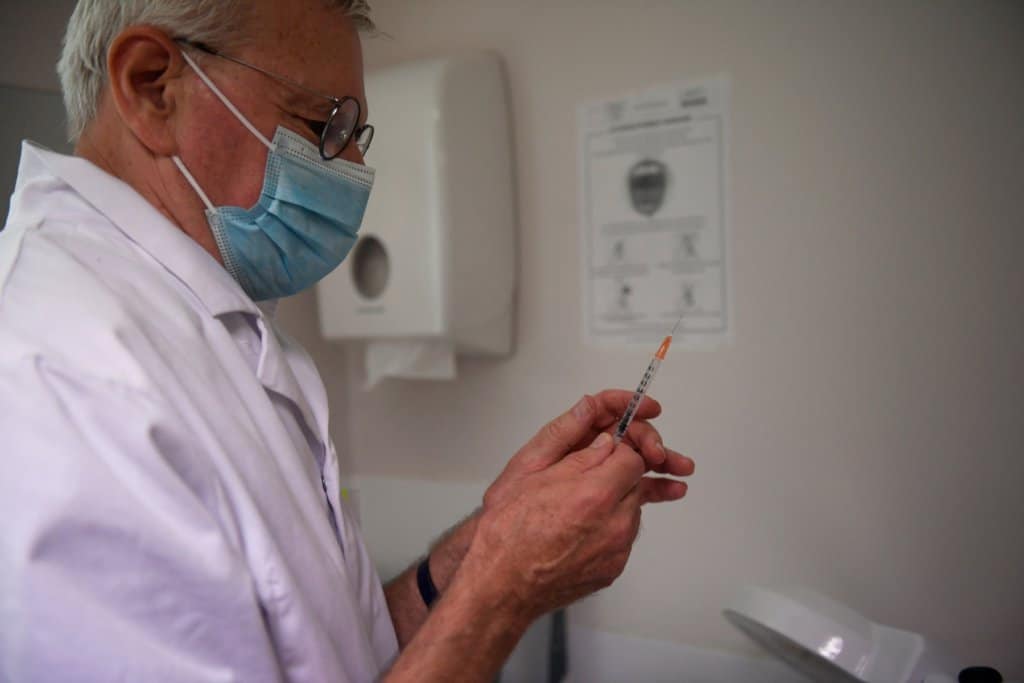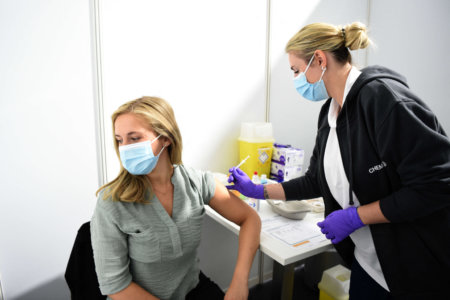
Studying medicine is a noble act, but a costly one, too.
A report by EducationData.org states that the cost of a medical school education has risen by about 2.5% each year since 2014, with the average yearly cost totalling about US$60,000.
Coupled with the fact that a medical degree takes about six years to complete, this means you’ll either be forced to invest a large sum of money, or even take out a private loan for it.
But worry not — there are affordable options available. Asia has a great selection, and you’ll find some of the cheapest medical schools in Europe, too.
Here, you can even complete your degree for free in some institutions if you’re willing to learn — and become fluent — in the local language.

You’ll be surprised to find that the cheapest medical schools in Europe also offer quality education. Source: AFP
Why study medicine in Europe?
In recent years, international students are choosing to study medicine in Europe, with universities in Romania, Hungary, Poland and the Czech Republic among the most popular.
While European universities may not be as internationally celebrated as others for medicine and healthcare programmes, the region is nonetheless home to quality institutes.
High standards of medical education
Don’t be fooled by the lower prices of the cheapest universities in Europe to study medicine. These institutions still emphasise quality research, with universities offering students options to participate in research opportunities both locally and abroad.Sometimes their standards are so high that at Università Cattolica del Sacro Cuore (UCSC), for example, there are only 70 seats for non-EU students and 30 seats for EU students. And Rebeca Ramos is one of the few who has earned her spot there as a medical student
International recognition
Medical degrees in Europe are recognised globally — and well respected.
Graduates can easily pursue further studies or choose to go back to their home countries to practice medicine, or find further opportunities in a different country if they so wish.
Multicultural experience
Europe is home to diverse cultures, promising a rich learning experience beyond the classroom walls.
International students will be prepared to work in future multicultural settings and adopt a broader perspective on healthcare as they work alongside their peers and faculty members.
Lower costs of living
The cost of living in a country like the US is significantly higher than across Europe when it comes to housing, groceries, and even transportation.
Basic living expenses in the US average about US$2,508 a month, while in Europe, it averages to around US$1,746.
If you’re looking to lower your costs even more, consider studying at the cheapest medical schools in Europe.
7fr cheapest medical schools in Europe
I.M. Sechenov First Moscow State Medical University, Russia
I.M. Sechenov First Moscow State Medical University, also known as Sechenov University, is one of the top public universities in the country, ranking at #2 on the US News and World Report.
That’s not all; it’s also one of the oldest and most affordable universities in Europe for studying medicine. For those pursuing the English track, the annual tuition fee for its undergraduate programmes will cost approximately US$11,800. The Russian track costs approximately US$9,600.
Despite lower fees, medical students here have an edge: more supply of bodies to learn from.
“We use cadavers every day,” share Anya Kimberly Kow, an international student at Sechenov University. “We must touch and interact with them during our classes rather than look at 3D models online — something that not all universities in other countries offer.
University of Bari, Italy
In Bari — the capital of southern Italy’s Puglia region — you’ll find the University of Bari.
Its renowned medical school offers an English curriculum called the Bari English Medical Curriculum (BEMC). This six-year medical degree programme is offered to both EU and non-EU students for cheap.
The public university charges an estimated US$1,629 per year depending on your financial circumstances — making it one of the cheapest medical schools in Europe.
If you’re a female student, you’ll be eligible for a 75% discount on registration fees for science-related degrees.
View this post on Instagram
Iuliu Hațieganu University of Medicine and Pharmacy, Romania
Located in Cluj-Napoca, the largest city in Transylvania and the second-largest city in Romania in terms of population, importance, and economic development, the Iuliu Hațieganu University of Medicine and Pharmacy is the oldest medical institution in the country.
With only three faculties available — medicine, dental medicine, and pharmacy — all degrees awarded by the university are automatically recognised throughout the European Union.
The medicine programme is six years long and is offered in Romanian, English, and French.
The best part? The total tuition fee here costs around US$12,495 — that’s around US$2,082.5 a year.
Medical University of Plovdiv, Bulgaria
Walk out with a master’s degree in medicine from the Medical University of Plovdiv and a professional qualification for physicians in six years if you choose to study at this Bulgarian institution.
Here, you train in preclinical and clinical disciplines at one of the 29 departments the university has to offer — from medical biology to endocrinology.
Tuition fees vary according to the medium of instruction chosen — around US$46,560 if you learn in Bulgarian and USD$54,320 if you learn in English.
View this post on Instagram
University of Zagreb, Croatia
The University of Zagreb‘s School of Medicine is the oldest school of medicine in the Republic of Croatia. The programmes here have continuously been developed to reflect the necessary changes of the modern medical healthcare scene, which makes all of the university’s teachings in line with the European Union’s expectations.
The Doctor of Medicine degree lasts six years, and students will have a thorough education in general, basic medical, pre-clinical, clinical, and public health courses. The low number of lectures here is complemented by the many seminars and demonstrations, and further bolstered by a great variety of practical exercises where students will work in clinical departments and in healthcare centres as well as in the field.
The total tuition fee here costs US$79,644.
Semmelweis University, Hungary
Located in Budapest, Semmelweis University is a leading institution of higher education in medicine and health sciences in Hungary and the Central European region.
The university offers a six-year Doctors of General Medicine programme taught fully in English, which is accredited by the World Federation of Medical Education.
In 12 semesters, medical students will spend time on theoretical modules, pre-clinical modules, and clinical modules before doing an internship at university clinics or accredited teaching hospitals. Tuition fees for the medicine programme are approximately US$117,731.

A woman skies after snowfall across the Charles Bridge in Prague on February 9, 2021. Heavy snowfall across the Czech Republic has disrupted rail, road and public transport. (Photo by Michal Cizek / AFP)
Charles University, Czech Republic
Charles University has five faculties of medicine, three of which are in Prague, one is located in Pilsen and one in Hradec Králové.
Though these are all independent institutions with set tuition fees of their own, all offer degree programmes in English. Generally, all medicine courses span six years and will lead you to the master’s degree Doctor of General Medicine.
The total tuition fee here ranges depending on which faculty of medicine you earn your degree in:
- US$159,204 in the First Faculty of Medicine
- US$122,058 in the Second Faculty of Medicine
- US$111,444 in the Third Faculty of Medicine
- US$106,134 in the Faculty of Medicine in Hradec Králové
- US$103,482 in the Faculty of Medicine in Pilsen
Disclaimer: This article was last updated on March 21, 2025.










